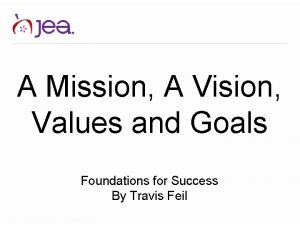InClass Participation of All Students Goal Allow all

- Slides: 1

In-Class Participation of All Students Goal: Allow all students to practice the course material by encouraging all students to think and talk about geoscience and by actively managing student participation. Advantages: • Promotes student engagement • Allows multiple voices to be heard • Does not add substantially to preparation time or time in class. Strategies Quick Around: Instructor asks a questions that has multiple answers and can be answered in < 30 seconds. Each student in the class (or for large classes in a row) answers the question. Especially useful at beginning of class to convey importance of participation and to allow students to practice using voice among the group. 1 Think-Pair-Share: A thought-provoking question is posed to students who think about the answer, discuss it with their neighbors, then share to class. Allows all students to participate in small groups and allows multiple ideas to be shared to larger class. 2 Implementation • After asking a question, incorporate one of the strategies. • No additional preparation required beyond being aware of strategy options. • Most strategies can be implemented across a range of class sizes. • Different strategies can be tried on different days. Strategies may be repeated to increase familiarity. Wait time/Write time: After asking a question, allow students time to think or write before asking for responses. Allows all students to practice thinking about a question and for students to gather their courage. 1 Multiple Hands – Multiple Voices: After asking for questions, require a certain number of hands to be raised before calling on anyone. 1 Concept Test: (Clicker questions) Multiple choice question that all students can answer with clickers or number of fingers. Allows all to participate and an alternative to verbal responses. Can be combined with think-pairshare. 3 References 1. Tanner, K. D. , 2013, Structure Matters: Twenty-One Teaching Strategies to Promote Student Engagement and Cultivate Classroom Equity. CBE Life Science Education, v. 12, p. 322331. 2. Lyman, F. , 1987, Think-Pair-Share: An expanding teaching technique: MAA-CIE Cooperative News, 1: 1 -2. 3. Mc. Connell, D. A. , Steer, D. N. , Owens, K. D. , Knott, J. R. , Van Horn, S. , Borowski, W. , Dick, J. , Foos, A. , Malone, M. Mc. Grew, H. , Greer, L, and Heaney, P. J. 2006. Using conceptests to assess and improve student conceptual understanding in introductory geoscience courses. Journal of Geoscience Education, v. 54(1), p. 61 -68.

